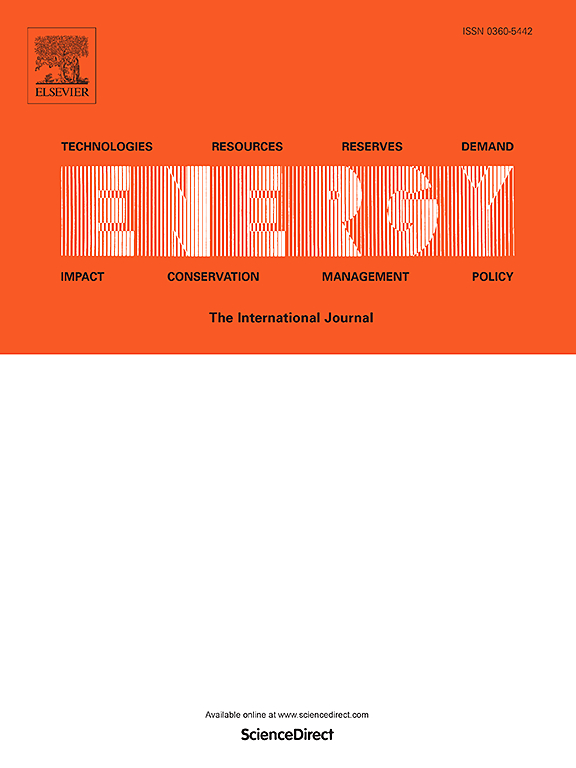Characteristics of ignition, combustion and emission formation of premixed ammonia-hydrogen blends by hydrogen-fueled pre-chamber turbulent jets
IF 9
1区 工程技术
Q1 ENERGY & FUELS
引用次数: 0
Abstract
Ammonia combustion initiated by hydrogen-fueled pre-chamber jets is a prospective combustion concept for enhancing ammonia combustion. However, the related fundamental studies on the ignition, combustion, and emissions characteristics of various ammonia + hydrogen blends by hydrogen-fueled pre-chamber jets are still inadequate. In this work, the effects of various ammonia + hydrogen blends in the main chamber with the hydrogen volumetric blending ratio ranging from 0 % to 50 % and the orientations of the orifice, i.e., inclined and straight orifice, are optically studied by the double-pass Schlieren imaging. The results indicate that increasing the hydrogen blending ratio markedly enhances the ignition characteristics of the mixture, resulting in the identification of three distinct ignition modes: re-ignition, secondary jet ignition, and jet flame ignition. The combustion regimes shift from the broken reaction zone to thin reaction zone. Increasing the hydrogen blending ratio improves the ammonia combustion efficiency from 96.9 % to 98.6 %, significantly reducing the unburned ammonia emissions. A high proportion of blended hydrogen increases the NOx emissions, while both low and high blends cause the reduction of N2O emissions. Additionally, the presence of straight orifice enhances the combustion of the mixture, while its emission levels remain comparable to those of the nozzle featuring all inclined orifices.
求助全文
约1分钟内获得全文
求助全文
来源期刊

Energy
工程技术-能源与燃料
CiteScore
15.30
自引率
14.40%
发文量
0
审稿时长
14.2 weeks
期刊介绍:
Energy is a multidisciplinary, international journal that publishes research and analysis in the field of energy engineering. Our aim is to become a leading peer-reviewed platform and a trusted source of information for energy-related topics.
The journal covers a range of areas including mechanical engineering, thermal sciences, and energy analysis. We are particularly interested in research on energy modelling, prediction, integrated energy systems, planning, and management.
Additionally, we welcome papers on energy conservation, efficiency, biomass and bioenergy, renewable energy, electricity supply and demand, energy storage, buildings, and economic and policy issues. These topics should align with our broader multidisciplinary focus.
 求助内容:
求助内容: 应助结果提醒方式:
应助结果提醒方式:


